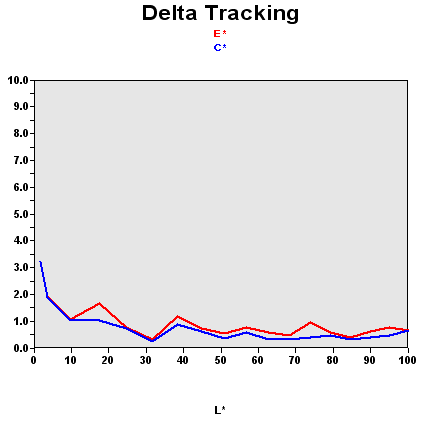Do The New 19" LCDs Pass Muster?
The LG-Philips 8-ms Panel
The new 8 ms panel from LG-Philips has fairly good overall color fidelity.

Recall that this graph shows the difference between the desired color shade and the one actually displayed.
- If DeltaE >3, the color displayed is significantly different from the theoretical one, meaning that the difference will be perceptible to the viewer.
- If DeltaE <2, LaCie considers the calibration a success, with a slight difference remaining, but one that will be all but undetectable to the user.
- If DeltaE < 1, color fidelity is excellent.
We noted great difficulty with the darkest shades - a familiar failing with Philips.
| Black spot | White spot | Contrast |
|---|---|---|
| 0.5 | 220 | 540:1 |
The black level is not the best we've seen, but the monitor's brightness level is a point in its favor - for once, it's not excessive.
The contrast was also very stable on this model. Note that you'll get the best contrast at a 72% brightness setting, but we found that the contrast behaved very well as a function of screen brightness. So you'll be able to adapt the brightness of your 190B6 to suite the ambient light without loss of contrast being a big problem.

This curve indicates the contrast value measured at a given brightness adjustment on the OSD. In theory, brightness and contrast are two independent parameters, and good contrast is a requirement regardless of the brightness adjustment. Unfortunately, such is not the case in practice.
The brightness adjustment is shown on the X-axis, contrast on the Y-axis. Contrast is expressed here as a percentage of the maximum value measured using the ANSI test protocol.
Stay on the Cutting Edge
Join the experts who read Tom's Hardware for the inside track on enthusiast PC tech news — and have for over 25 years. We'll send breaking news and in-depth reviews of CPUs, GPUs, AI, maker hardware and more straight to your inbox.
Most Popular

